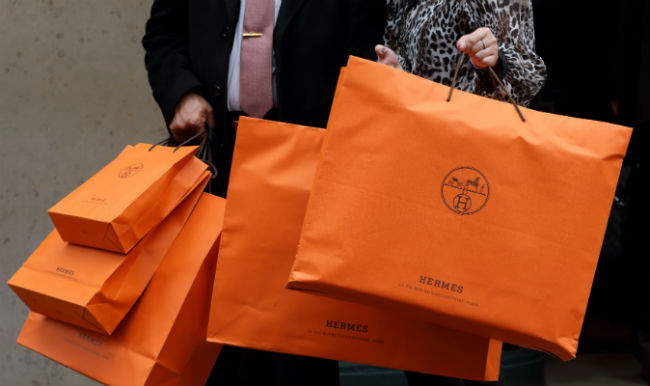Yes, China is the world’s largest market for luxury goods
Even during the global recession, China is staying the first country for the luxury industry. The sales of luxury goods in the mainland rose by 16 percent, to about $17.3 billion in 2015.
Actually, Chinese shoppers account for nearly half of the global luxury market.
At a time of rapidly rising incomes, widely available luxury products and shifting attitudes toward the display of wealth, more Chinese consumers than ever feel comfortable buying luxury goods.
Customer profile
A new generation of shoppers is emerging in China, younger and more sophisticated, with different tastes, aspirations and consumption habits. This new target is educated and tech-savvy and travel a lot. It is open minded and reshape completely the landscape of luxury in China.
The main customers are female, between 25 and 35 and interested in ready-to-wear above all.
Consumers’ behaviours
In the past, luxury goods were seen as a symbol of wealth and status for Chinese consumers. People wanted to wear expensive brands to show their wealth. Now, Chinese buy luxury goods for their own enjoyment.
The logo or the name of the brand is not longer the priority. Chinese are also interested in niche high-end brands.
They are now looking for an experience when they buy luxury brands. It is not just about purchasing, they search for international brands that make them dream. In fact, they tend to consume more internationally well-known brands.
A big part of the experience is shopping while traveling. Hong Kong was the preferred destination for luxury shopping, but today Tokyo and Europe are more important. When travelling, Chinese people spend a lot in luxury goods because it is cheaper than in their country. A luxury item in China can cost as much as 80 percent more than the identical item in Europe, the result of exchange rates, taxes and duties.
However, more recently, the Chinese government has tried to reduce the price gap between Europe and China by reducing the taxes. Now it is not as expensive for Chinese to buy in their country.
Online shopping
Chinese have built their own online network and represent the biggest community in the world. They are really connected to their social medias, WeChat or Weibo and to the e-commerce platforms.
Actually, customers now shop both in stores and online. The main e-commerce platform is Tmall, the business-to-consumer site operated by the Chinese online giant Alibaba. Famous brands such as Burberry opened a store in late 2014 on tmall.com. Cartier introduced its online shopping site in October, and other brands have made similar moves.
Then, luxury brands can communicate through the digital platforms nowadays because it is easy to catch lots of people quickly. Through the social medias for example, brands can do some personalised promotions and sales and customers can get information about the brand, they can even converse with the official accounts and pay some purchases through WeChat directly. Some brands created as well a “WeChat store”.
The local luxury market
There are few Chinese luxury brands but the local market is developing. The most famous Chinese brands includes Shanghai Tang and Chow Tai Fook, two large Hong Kong-based labels in fashion and jewelry, respectively.
But more and more Chinese brands are emerging and hope to compete with the international ones soon.
Further readings:
- Articles about luxury in China
- 7 luxury marketing trends in China for 2016
- Branding is everything for Chinese buyers
- Luxury & Tourism







1 comment
Mark
As of 2020, is China still the first buyer of luxury goods? I’ve read somewhere that half of purchased luxury goods were purchased by Chinese.
I aslo read that many young chinese consumers go into debt to be able to purchase luxury good.
Do you have any data on the topic?